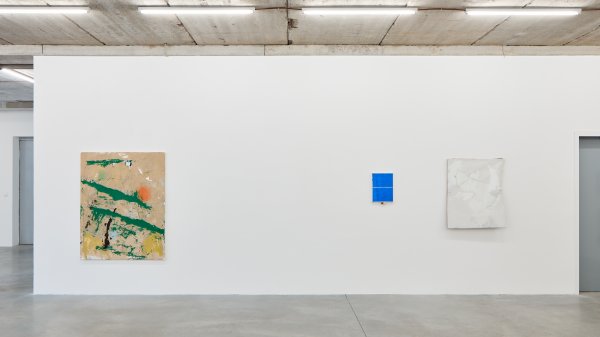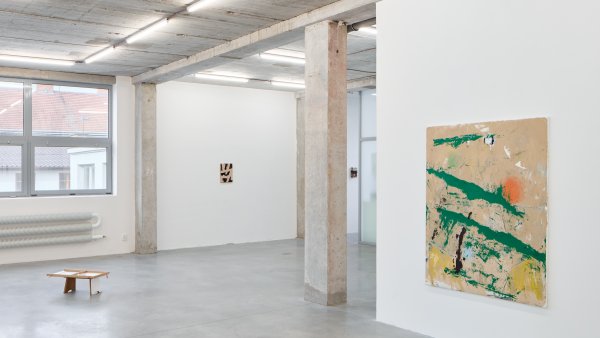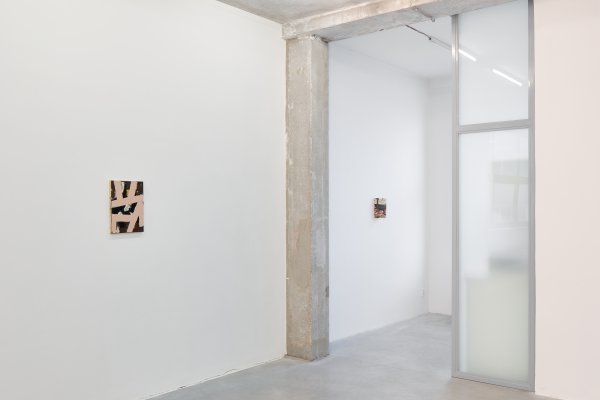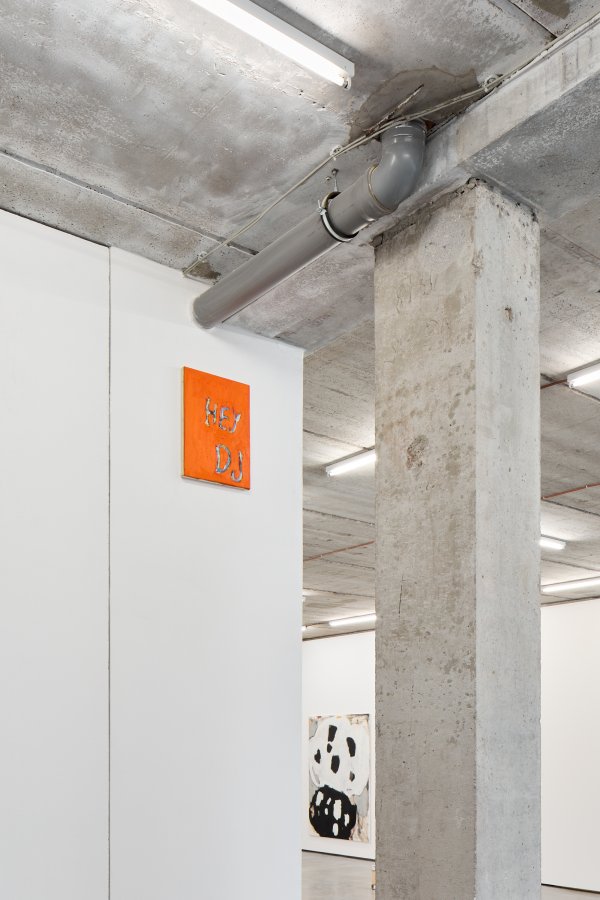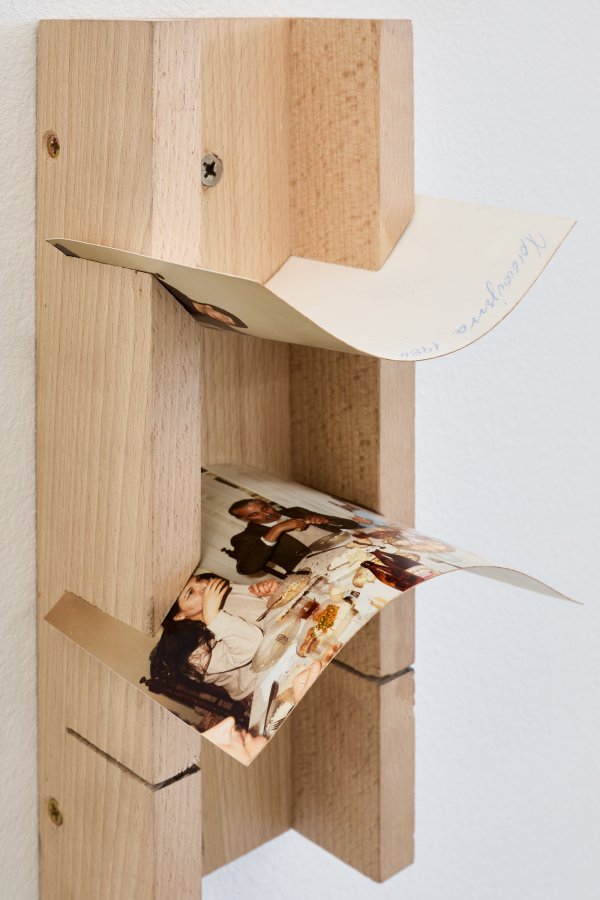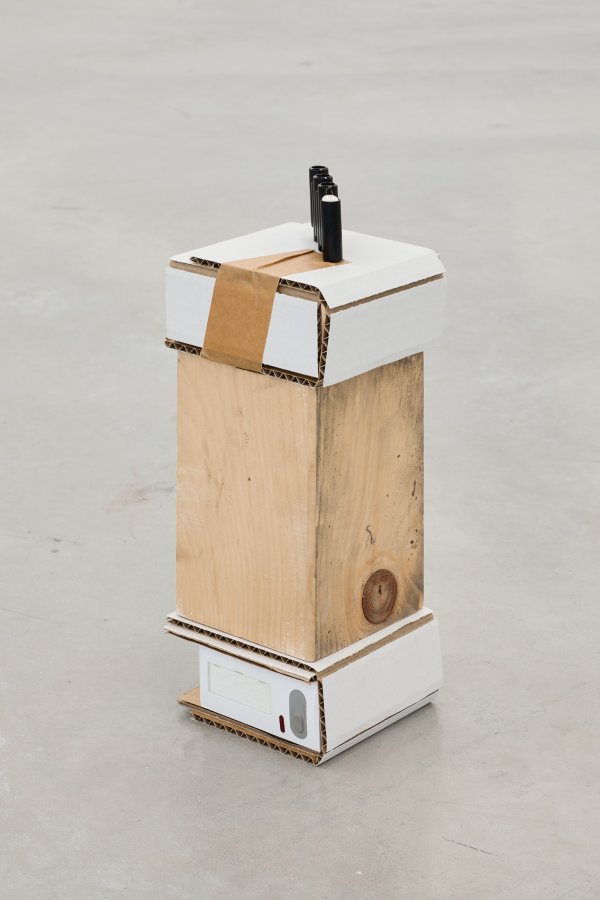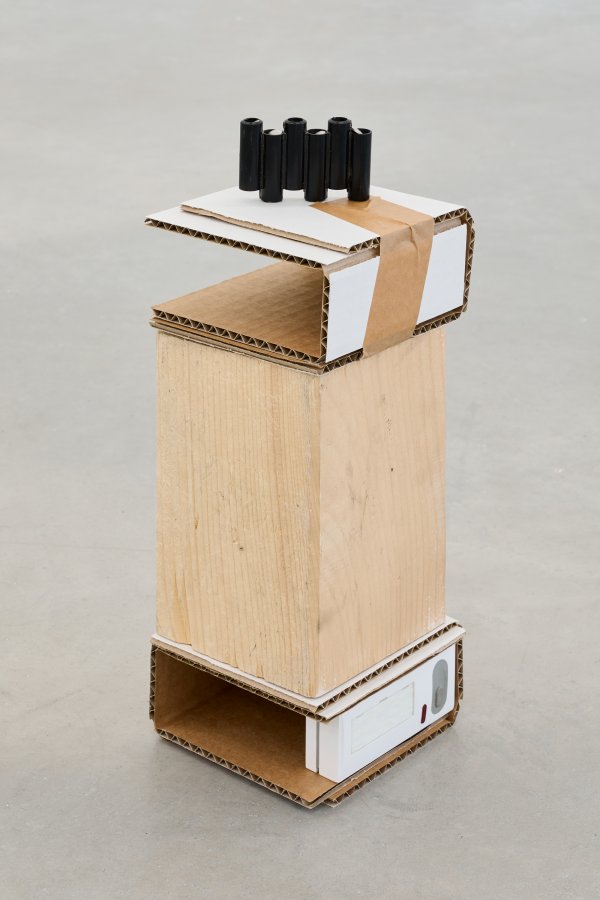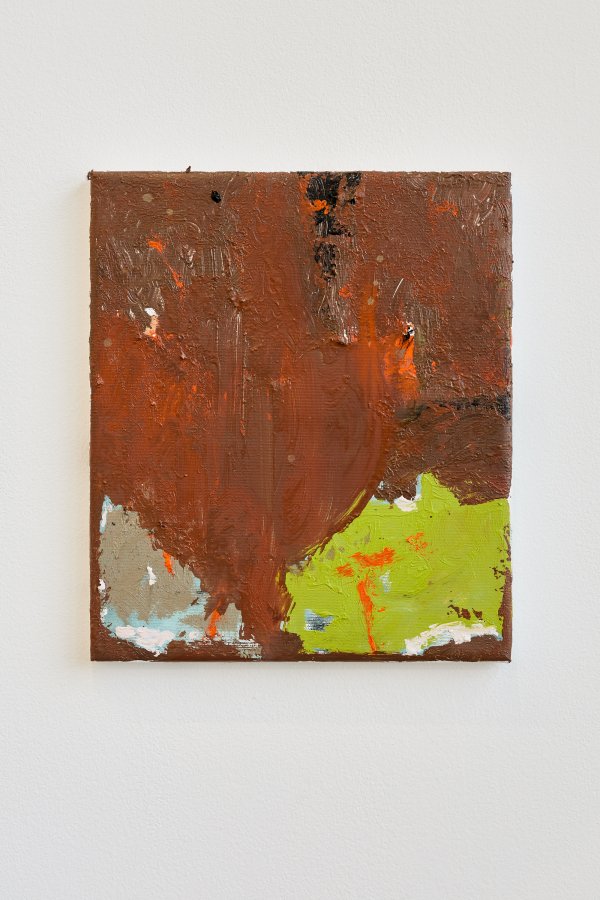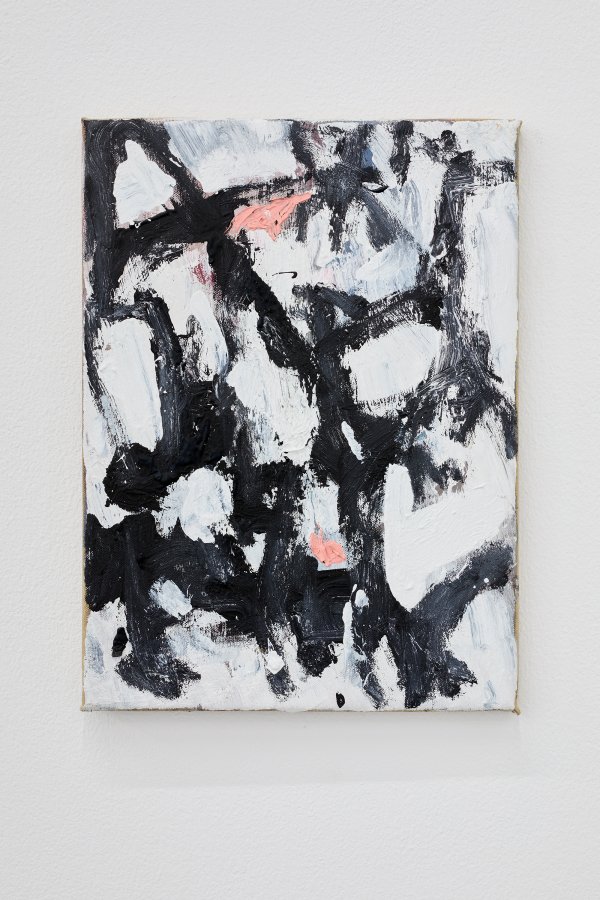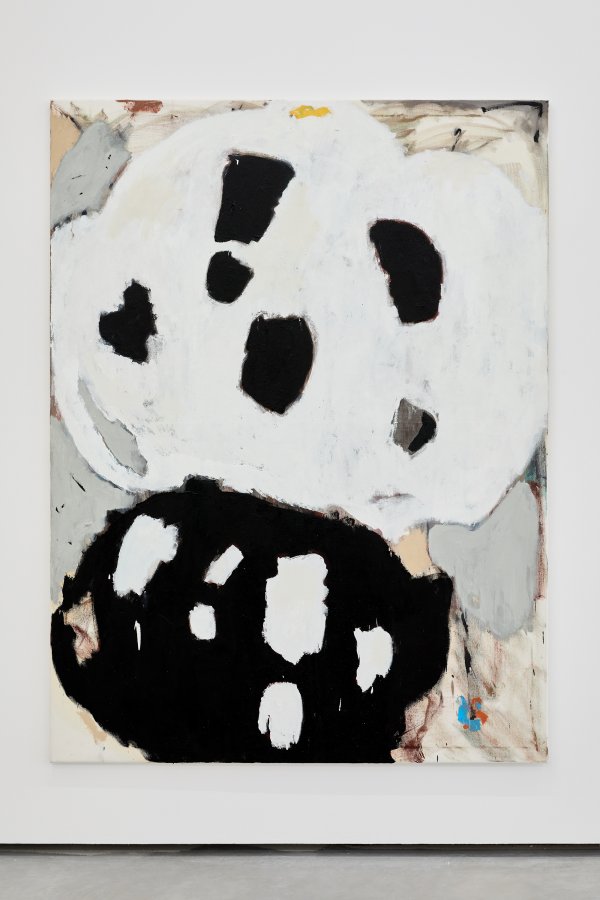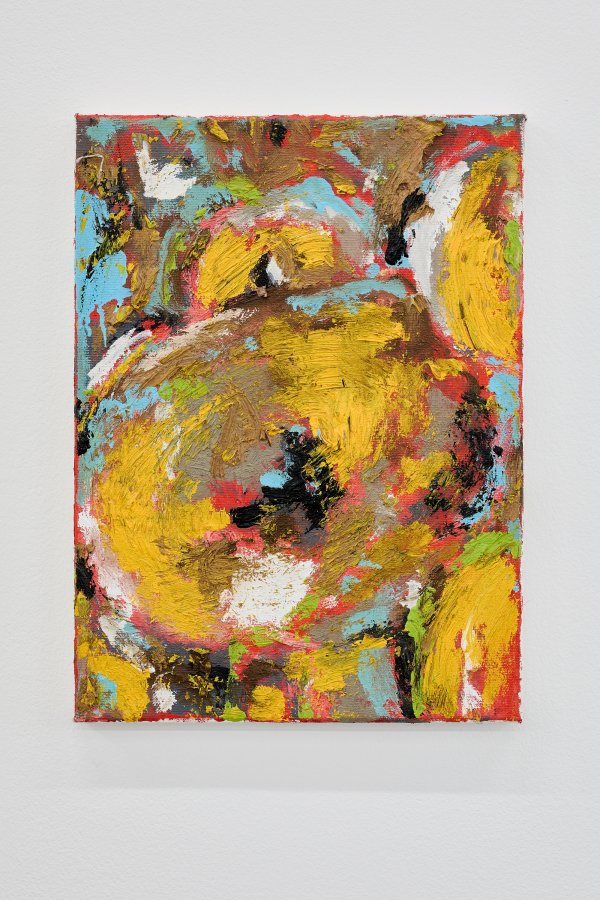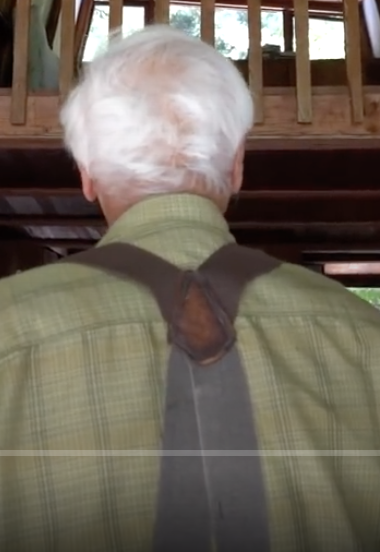Adam Vít
figs
17.3.2022–13.5.2022 Brno- text by Marek Meduna (EN)
- text by Marek Meduna (CZ)
A few incoherent notes on figs by Adam Vít
Adam Vít makes paintings, after many others and certainly before many others. He knows that questions about the meaning of his work can only be answered by action, in this case by image. Each answer is tautologically wrapped in itself, similar to the institutional definition of art. After all, the desire for fixed definitions is one of the traps of the human mind and the heart. And it is the art theory that causes contradictions in artistic practice. But enough was an unfortunate personification.
Adam Vít makes paintings that could be considered abstract. Their appearance is as important as the recent change in his approach to art, to painting. I would like to write that to the life as well, but that would be too much of a generalization, too much abstraction. But perhaps I can afford it in an age of slowly ending globalization, an impending climate crisis, at a time when the world we know is slowly ending - not by banging, but by whining.
Someone once said that the basic motto of abstract painting is its flatness, which is said to be the quality inherent in painting. Today we can talk all the more about flatness - we encounter most of the current images through the screens of phones, tablets and computers. The main impression of the current abstract painting is the huge overproduction of paintings. But are Vít's paintings flat enough, when we physically meet them in a gallery, in a studio? Definitely the color is made of matter and it emerges from the canvas. We can also situate some parts in the paintings closer and some further. What was flat at the beginning of the Cold War is full of space after more than twenty years of living with the Internet and graphical interfaces.
In the chapter "Why Society in the United States Seems Both Restless and Monotonous." Alexis de Tocqueville sought to describe the behavior of individuals in a democratic society, as pilgrims scattered in a large forest, whose paths lead to the same point. When they all see this point at the same time and focus their steps on it, they suddenly approach each other without searching, without seeing each other, without knowing each other, and they will eventually be surprised when they gather in one place. ” We call this place contemporary art.
In 1960, Jiří Padrta said: “There is something ridiculous and pathetic about the universal myth of abstract art. Painting is said to be autonomous, clean and standing on its own, so we usually analyze its individual components and define its limits. But painting is always unclean. And it is the taking care of the dirt that forces the painter to keep working. We are thus creators of the images, although images control us. "
There is something fragile about Adam Vít's paintings and approach. The generous, self-confident gesture, that was the pin, which the approach of many famous abstract, tachistic, informel, and whatever painters wrapped around, is, in his case, dry, isolated and more random. In his case it’s more like a dirt behind the nails, an uncertain hand, rather than a manly seductive smile. At the same time, the presented paintings try to stand on their own, to be just and just to be, not to refer, not to show off. But our current situation, the circumstances of the late period are also fragile. It is impossible to get out of the compost of reciprocal references and feelings of ambiguity. Although after the seismic shocks that are, and mainly will be associated with Russian aggression against Ukraine, who knows. Maybe the level of complexity of the perception of fine art will decrease to a new minimum.
Abstract images are always suspected by viewers, on the one hand, of the excessive ease of their creation and, on the other hand, that they demonstrate belonging to a cultural elite. But Vít follows a different type of ethos. In the times of punk, everyone could start their own band, pick up a guitar, some did, but only few found their voice. Adam Vít's paintings might seem relatively easy to create, but only few do so, or at least not in the long run. Despite the birds, the path from the crumbs across the time has its price.
Adam Vít's new paintings are contrasting and harmonious. Note the symmetry, repetitions, structures and patterns, abstract motifs, aesthetic relationships, repeated strategies, how the author places the pictorial motifs, sorts the color plans. Focus on the role of randomness, on error, on the author's casual approach. The paintings do not try to open an imaginary window into a continuous environment, but they are full of views of the final surface of the canvas, of the gesso, they are echoes of some degraded graphic design. After all, art arises not from a preconceived concept, but rather from stupidity, inexperience, taste and happiness.
Marek Meduna
Několik nespojitých poznámek k Fíkům Adama Víta
Adam Vít maluje obrazy, maluje po mnohých a jistě před zástupy dalších. Ví, že na otázky po smyslu jeho práce lze odpovědět pouze činem, tedy v tomto případě obrazem. Každá odpověď je tautologicky zavinutá do sebe podobně jako institucionální definice umění. Ostatně touha po pevných definicích je jednou z pastí lidského rozumu i srdce. A rozpory umělecké praxe vyvolává vždy až teorie umění. Ale dost bylo neblahé personifikace.
Adam Vít maluje obrazy, které lze považovat za abstrakce. Jejich vzhled je stejně důležitý jako nedávná změna Adamova přístupu k umění, k malbě. Rád bych napsal, že i ke světu, ale to by bylo až příliš velké zobecnění, příliš velká abstrakce. Ale snad si to mohu dovolit ve věku pozvolna končící globalizace, nastupující klimatické krize, v časech, kdy pozvolna končí nám známý svět – ne bouchnutím, ale zakňouráním.
Kdosi kdysi prohlásil, že základní devízou abstraktní malby je její plochost, což je prý kvalita, která je malbě vlastní. Dnes můžeme o plochosti hovořit o to více – s většinou současných obrazů se setkáváme prostřednictvím obrazovek telefonů, tabletů a počítačů. Hlavním vjemem z aktuální abstraktní malby je obrovská nadprodukce obrazů. Ale jsou obrazy Adama Víta dostatečně ploché, když se s nimi fyzicky setkáme v galerii, v ateliéru. Rozhodně je barva tvořena hmotou a ta vystupuje z plochy plátna. Též na obrazech můžeme některé části situovat blíže a některé dále. Co bylo ploché v počátcích studené války, je plné prostoru po více než dvaceti letech života s internetem a grafickými rozhraními.
Alexis de Tocqueville se snažil v kapitole „Proč společnost ve Spojených státech vypadá zároveň neklidná i jednotvárná“ opsat chování jedinců v demokratické společnosti, „jako poutníky, kteří jsou rozptýleni ve velkém lese, jehož cesty vedou do téhož bodu. Když všichni vidí současně tento bod a zaměřují k němu své kroky, poznenáhlu se k sobě přibližují, aniž by se hledali, aniž by se viděli, aniž by se znali, a budou nakonec překvapeni, když se shromáždí na jednom místě“. Tomu místu říkáme současné umění.
Už v roce 1960 Jiří Padrta řekl: „V rádoby univerzálním mýtu abstraktního umění je něco směšného a ubohého. Malba je prý autonomní, čistá a stojící sama o sobě, proto obvykle analyzujeme jednotlivé její složky a definujeme její limity. Ale malba je vždy nečistá. A je to právě úprava špíny, která nutí malíře do další práce. Jsme tak tvůrci obrazů, ačkoliv obrazy řídí nás.“
Na obrazech i přístupu Adama Víta je cosi křehkého. Velkorysé, haurské gesto, které bylo čepem, okolo něhož se obtáčel přístup mnoha slavných abstraktních, tašistických, informelních a kdovíjakých malířů, je v jeho případě suché, izolované, nahodilé. Je spíše špínou za nehty, nejistě podanou rukou než chlapáckým úsměškem svůdce. Současně se představované obrazy snaží stát samy o sobě, být jen obrazy, být pouze uměním, nereferovat, nepředvádět se. Ale naše situace, okolnosti pozdní doby jsou též křehké. Z kompostu vzájemných odkazů a pocitů nesamozřejmosti se vymanit nelze. Byť po seizmických otřesech, které jsou, a hlavně budou spojeny s ruskou agresí vůči Ukrajině kdoví. Třeba se úroveň složitosti percepce výtvarného umění sníží k novému minimu.
Abstraktní obrazy jsou diváky podezřívány jednak z přílišné snadnosti jejich vytváření a jednak že jsou demonstrací příslušnosti ke kulturní elitě. Adam Vít ale navazuje na jiný typ étosu. V době punku mohl každý založit svou kapelu, vzít do ruky kytaru, někteří tak učinili, ale jen nemnozí našli svůj hlas. Obrazy Adama Víta lze relativně snadno vytvořit, ale málokdo tak činí, či alespoň ne dlouhodobě. Cesta z drobečků napříč časem má navzdory ptactvu svou cenu.
Nové obrazy Adama Víta jsou kontrastní i harmonické. Povšimněte si symetrií, repetic, struktur a patternů, abstrahovaných motivů, estetických příbuzností, opakovaných strategiích, kterak autor umísťuje obrazové motivy, řadí barevné plány. Zaměřte se na roli nahodilosti, na chybu, na ležérní přístup autora. Obrazy se nesnaží otevřít pomyslné okno do spojitého prostředí, ale jsou plné výhledů ke konečné ploše plátna, k malířskému šepsu, jsou ozvěnami jakéhosi degradovaného grafického designu. Vždyť umění povstává nikoliv z dopředu vytyčeného konceptu, ale spíše z hlouposti, nezkušenosti, chuti a štěstí.
Marek Meduna





